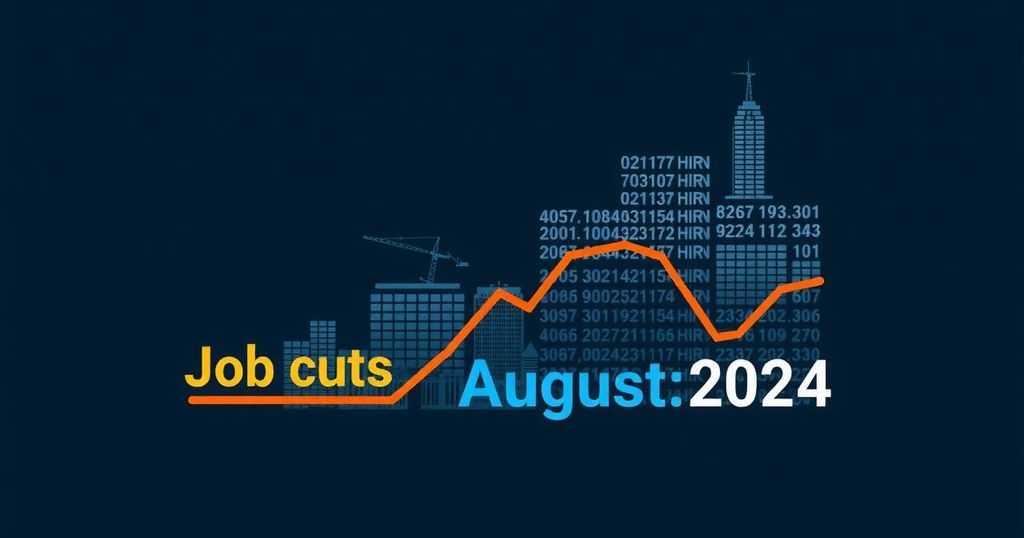Summary
In August 2024, U.S. employers announced 75,891 job cuts, marking a 193% increase from July and representing the highest August total since 2009. The technology sector led in layoffs, while overall hiring plans fell to the lowest year-to-date figures since monitoring began in 2005. Economic uncertainties and shifts towards profitability and efficiency are driving these trends in workforce management.
In August 2024, U.S.-based companies announced a significant surge in job cuts, totaling 75,891, which represents a staggering increase of 193% compared to the 25,885 cuts reported in July. This figure marks a slight rise, up 1%, from the 75,151 layoffs recorded in August of the previous year, according to the latest report from the global outplacement firm Challenger, Gray & Christmas, Inc. In the year to date, companies have announced a total of 536,421 job cuts, reflecting a decrease of 3.7% from the 557,057 cuts reported through August 2023. Notably, excluding the 115,762 job cuts reported in August 2020 due to the pandemic, the recent total marks the highest for that month since 2009. Andrew Challenger, Senior Vice President of Challenger, Gray & Christmas, highlighted the growing economic uncertainties and market shifts prompting employers to make difficult workforce management decisions, stating, “August’s surge in job cuts reflects growing economic uncertainty and shifting market dynamics… Cuts are following a very similar trend from last year as ongoing pressures have challenged labor decisions.” The technology sector, which recorded its highest job cuts in 20 months, announced 39,563 layoffs in August, with year-to-date cuts totaling 105,426. This figure depicts a 29% decline compared to 149,452 cuts noted at the same point last year. Challenger elaborated on the industry’s current focus, emphasizing profitability and efficiency driven by AI and automation, stating, “The Tech sector is moving from a growth and innovation focus into one of profitability and efficiency.” Other sectors experiencing job cuts include Education, with 25,396 layoffs announced in 2024 (up 222% from 2023), and Entertainment/Leisure, which saw 21,686 cuts (up 85%). The industrial manufacturing industry reported 17,828 job cuts, reflecting an increase of 261%. Furthermore, while retail has closed stores and declared bankruptcies—including notable companies like Macy’s and LL Flooring—it has seen a 56% drop in job cuts compared to 2023. Reasons for these cuts have been predominantly attributed to cost-cutting measures, with 37,403 jobs lost for this reason, alongside 16,439 tied to market and economic conditions. It is noteworthy that for the first time, employers cited Artificial Intelligence as a reason for 5,943 job cuts, all from the tech industry, underscoring the sector’s evolution. Contrarily, U.S. employers’ hiring plans have dwindled dramatically, with 79,697 plans announced for the year, a substantial 41% drop from the previous year. This total represents the lowest recorded since Challenger began tracking hiring intentions in 2005, which raises concerns about future labor market conditions.
In the current economic landscape, U.S. employers are navigating a complex series of challenges characterized by heightened economic uncertainty, rising operational costs, and increasing competition. These pressures have compelled many businesses to reassess their workforce strategies, resulting in a marked rise in job cuts across various industries. This situation is particularly pronounced in sectors heavily impacted by technological advancements and shifting consumer demands, which have redefined operational priorities. Challenger, Gray & Christmas, Inc.’s recent report highlights these trends, underlining a transformation in job dynamics that reflects both external economic factors and internal corporate strategies focusing on efficiency and profitability.
The sharp rise in job cuts announced by U.S. companies in August 2024, coupled with the decline in hiring plans, signifies a labor market facing significant challenges. Industries like technology, education, and leisure are particularly affected, with job reductions driven by economic uncertainties and evolving corporate strategies towards efficiency. With fewer hiring intentions recorded, employers and employees alike must navigate the complexities of a shifting economic landscape that may hinder future job opportunities.
Original Source: www.challengergray.com

Leave a Reply